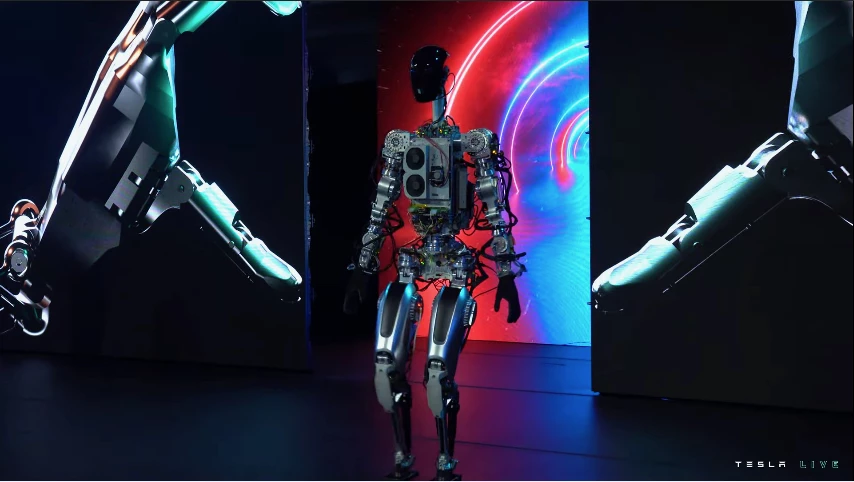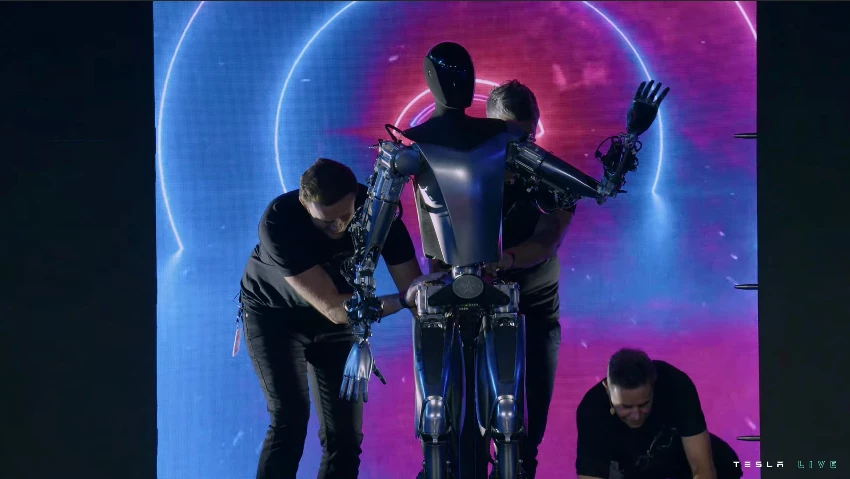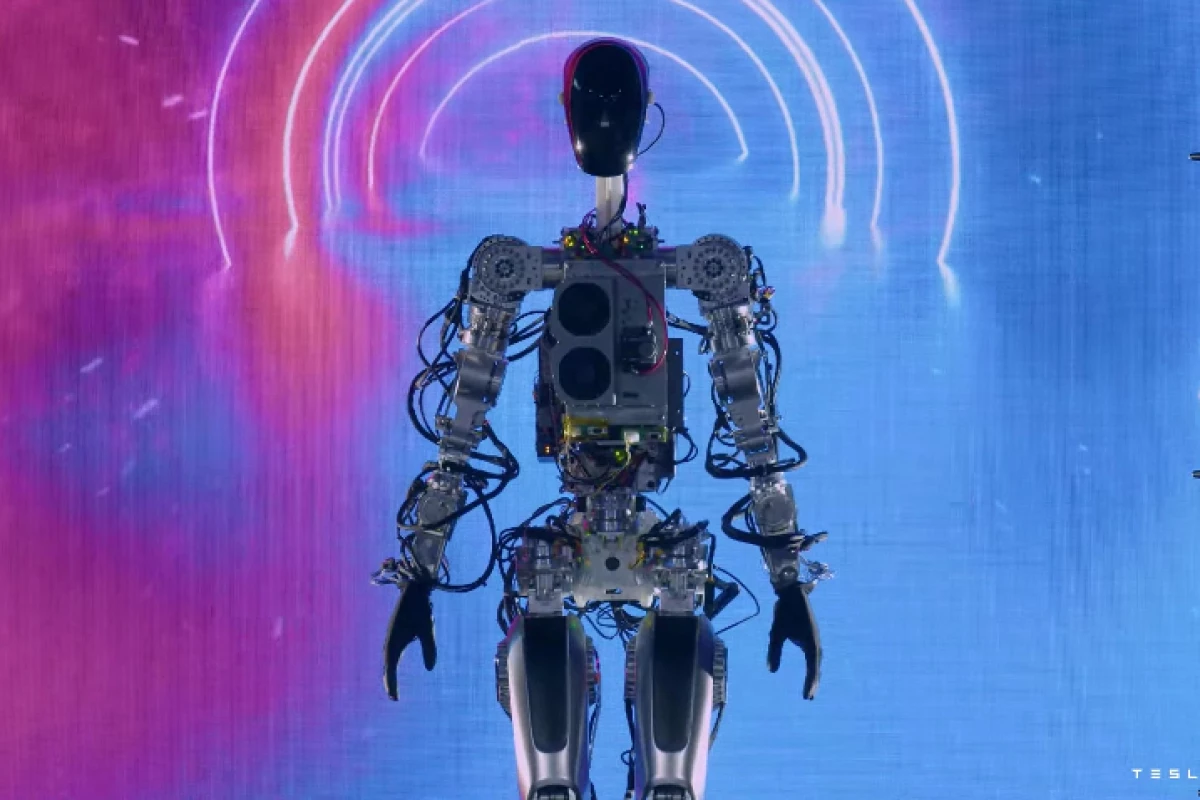Last August, Elon Musk announced that Tesla was working on a bipedal humanoid robot that could perform boring and/or dangerous tasks for humans. His company has now unveiled two prototypes, one of which can already walk on its own.
The big reveal took place at a Tesla office in Palo Alto, California last Friday (Sept. 30th), as part of Tesla's AI Day presentation.
After an introduction by Musk, a "rough development" prototype named Bumble C slowly walked out onto the stage, waved to the audience, did a double fist-pump, then walked back off again. This was reportedly the first time that the robot had walked completely on its own, unsupported by any overhead tethers.

A video presentation then showed some practical applications of the robot. Supported by a tether in the footage, Bumble C picked up and carried a box, picked up a watering can and watered some plants, then picked up and placed a steel bar. In all cases, its onboard object recognition system was able to visually identify the target items.
Musk then proceeded to announce a slicker, more streamlined prototype – named Optimus – which is reportedly much closer to the planned untethered production model. Because it's not yet able to walk, it had to be pushed out by a group of technicians, after which it did demonstrate some arm, hand and leg movements.

While both robots currently utilize "semi-off-the shelf" actuators, Musk stated that the final version will feature custom Tesla actuators, batteries and control systems. Plans also call for it to be able to move all of its fingers independently (including an opposable thumb). As is the case with the existing prototypes, it will utilize an adapted version of the AI-based autopilot technology already used in Tesla automobiles.
According to Musk, the company's ultimate goal is to develop a fully autonomous robot that can be easily manufactured in large numbers, thus possibly keeping its price somewhere below US$20,000.
You can see the robots in action in the video below, starting around the 16:55 mark.
Source: Tesla




